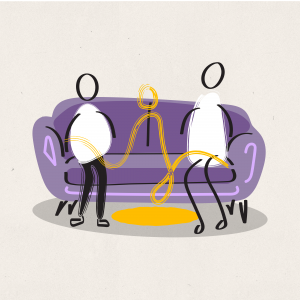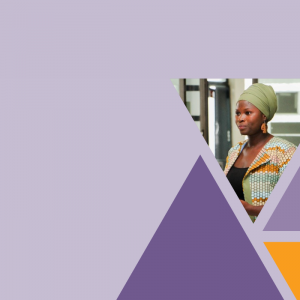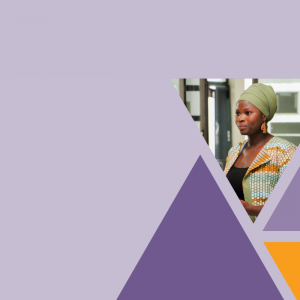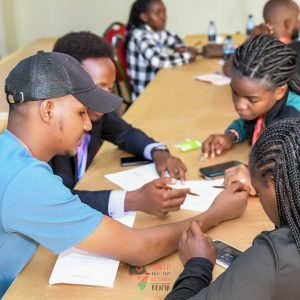In September, Aisha Hussein Roba – a youth grantee from Isiolo, Kenya alongside Orchid Project Advocacy Manager, Brenda Dora attended the Summit of the Future on the sidelines of the 79th session of the United Nations General Assembly (UNGA79). This was as part The Girl Generation: Support to the Africa-led Movement to end Female Genital Mutilation (TGG) delegation led by Orchid Project.
The Pact for The Future- A Stand Out Moment
UNGA is always a pivotal moment where world leaders gather annually in New York at the UN Headquarters. However, this year stood out for its unanimous adoption of the Pact of the Future.

This was the result of a broad process, spanning several years and is the most comprehensive international agreement in many years. The Pact addresses not only new issues but also some long-standing areas of contention where progress has been slow for decades. Its primary goal is to ensure that global institutions can rise to the demands of a world that has changed significantly since their inception. This was captured by the UN Secretary-General, noting, “we cannot create a future fit for our grandchildren with a system built by our grandparents.”
The Pact addresses a broad range of critical global issues, including peace and security, sustainable development, digital cooperation, and youth engagement. Notably, the inclusion of women and girls is far more prominent in the adopted version compared to earlier drafts, which lacked a strong focus on gender equality. However, many believe gender equality should have featured much stronger in the Pact. Inclusion of female genital mutilation as a form of violence in the adopted Pact is definitely a victory.
Youth at the Core of Change
In the work that Orchid Project has been leading on behalf of TGG: Support to ALM Programme, Orchid Project works with young people as agents of change in the end FGM/C movement. The programme has been championing strategic inclusion of young people with the realisation that as the world becomes more interconnected, global challenges like climate change, poverty, and inequality cannot be solved without the involvement of young people.
One of the key breakthroughs within the Pact was the first-ever Declaration on Future Generations. This declaration outlines specific measures to ensure that future generations are considered in today’s decision-making processes. Alongside the appointment of the UN Assistant Secretary General on Youth a year ago, this heralds a new era of youth involvement in global governance.
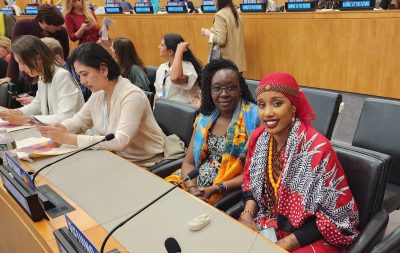
During the Summit of the Future Youth Action Day, it was apparent that young voices are essential to any meaningful solution. The UN Assistant Secretary-General for Youth Affairs Dr. Felipe Paullier spoke about the youth engagement as the norm and it would be a disservice to downplay the role that young people play in crucial decision-making fora.
He elaborated that the existence of the UN Youth Office as a specialised mechanism on youth affairs has created an opportunity to engage on youth issues and stated that the Summit of the Future was a once in a lifetime opportunity to reshape multilateralism with young people at the centre of it.
The UN Secretary-General António Guterres’ message to youth was that intergenerational collaboration would foster and contribute to solving the crisis all over the world.
Not only did he speak to the importance of intergenerational dialogue, but he also encouraged the youth to show strength to create change, “young people should grow stronger movements and demand their rights, as no one will give them anything for free; and as history and practise show, power passes only to those that are smarter, stronger and more energetic.” Brenda shared that this reminded her of the work that that Orchid Project have been doing as part of TGG: ALM to marshal the power of youth voices and young people to proactively catalyse a youth movement that will significantly contribute to ending female genital mutilation/cutting.
Interactive Dialogues: Elevating Youth Voices
Aisha shared that one of the most impactful moments during her experience of the summit was the interactive dialogues that placed youth voices front and centre. These dialogues were structured to allow young activists and leaders to present their ideas directly to global decision-makers. This wasn’t just a one-way conversation— it was a dynamic exchange where young people proposed concrete solutions and challenged the current state of affairs. The focus was on co-creation, allowing youth participants to have real impact on conversations shaping international policies.
A recurring theme was the need for intergenerational collaboration and inclusion. It’s no longer enough for older generations to set the agenda, young people must be part of that process from the outset. During these dialogues, we saw world leaders and other high-level officials recognising the importance of integrating youth perspectives into policy frameworks, especially when discussing the future of technology, peace, security, and sustainable development.
Conclusion: The Future Starts Now
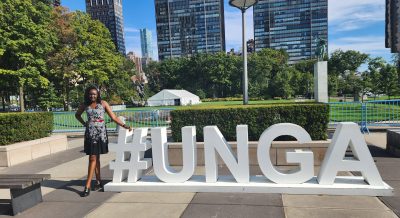 In Brenda’s opinion, attending the Summit made one thing clear; the future of multilateralism depends on the active involvement of young people. She feels fortunate to be leading on youth-led, youth-focused, and youth-driven solutions in their communities,“I can confidently state that the youth are the doorway to creating innovative solutions to the world’s most urgent problems.”
In Brenda’s opinion, attending the Summit made one thing clear; the future of multilateralism depends on the active involvement of young people. She feels fortunate to be leading on youth-led, youth-focused, and youth-driven solutions in their communities,“I can confidently state that the youth are the doorway to creating innovative solutions to the world’s most urgent problems.”
Aisha’s message from experiencing such a huge global convening for the first time is that as we move forward, it is crucial that young people continue to be seen as equal partners in the global dialogue, particularly as we face unprecedented challenges such as female genital mutilation/cutting and child, early, and forced marriages that plague her community.
“My takeaway is that the momentum from the Summit of the Future has set a powerful precedent for the future of international cooperation, one where youth are integral to shaping a world that is just, sustainable, and inclusive for all,“ shared Brenda.

